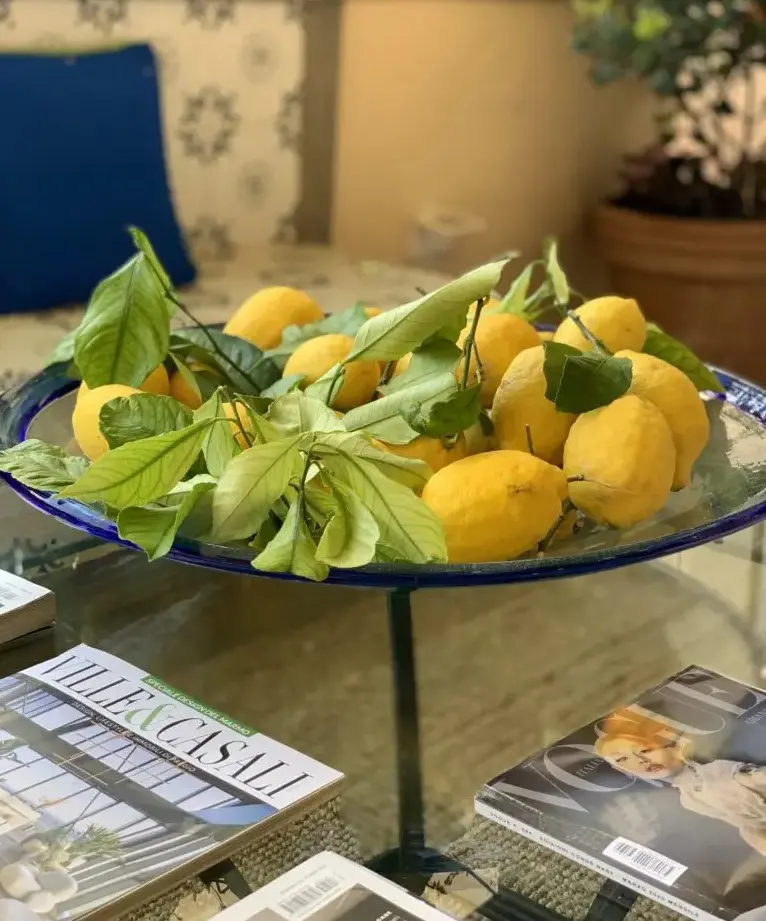
Like many of us during the pandemic, I found solace in experimenting with growing our food. It was a joy to take the seeds from our everyday food prep and witness their transformation. With ample time on our hands, the entire family, including my son, Tom, and my husband, Richard, eagerly joined in. Early spring, with no end to our time in isolation, I set them both to work digging what would become our first vegetable beds, now a cherished part of our home.
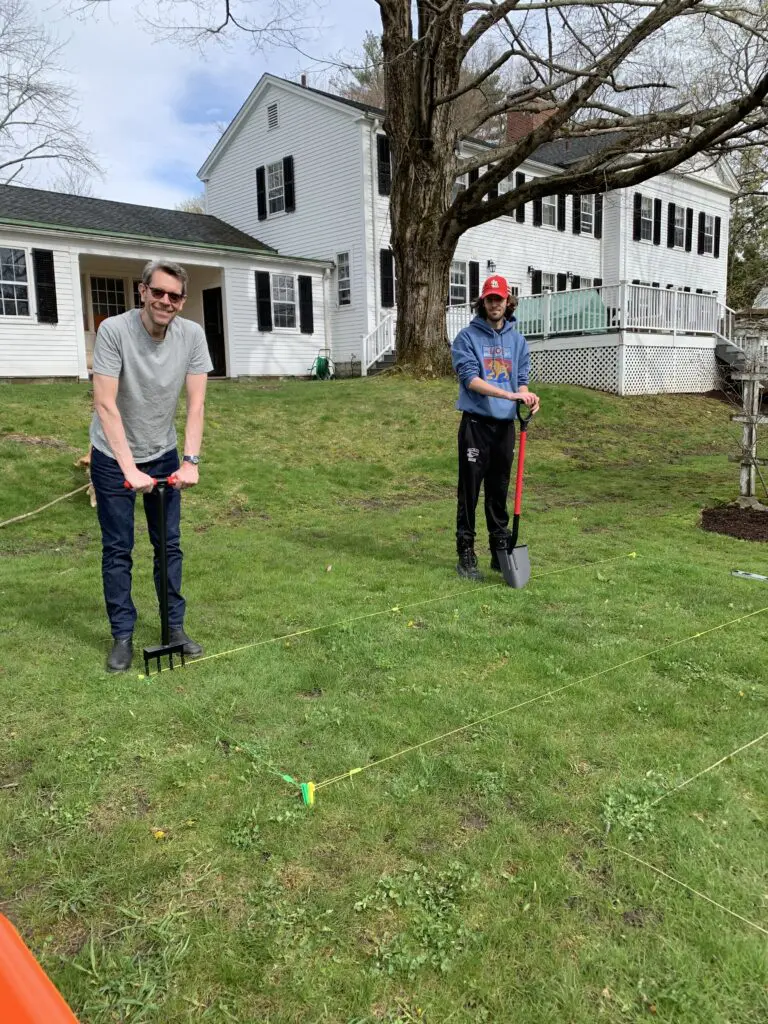
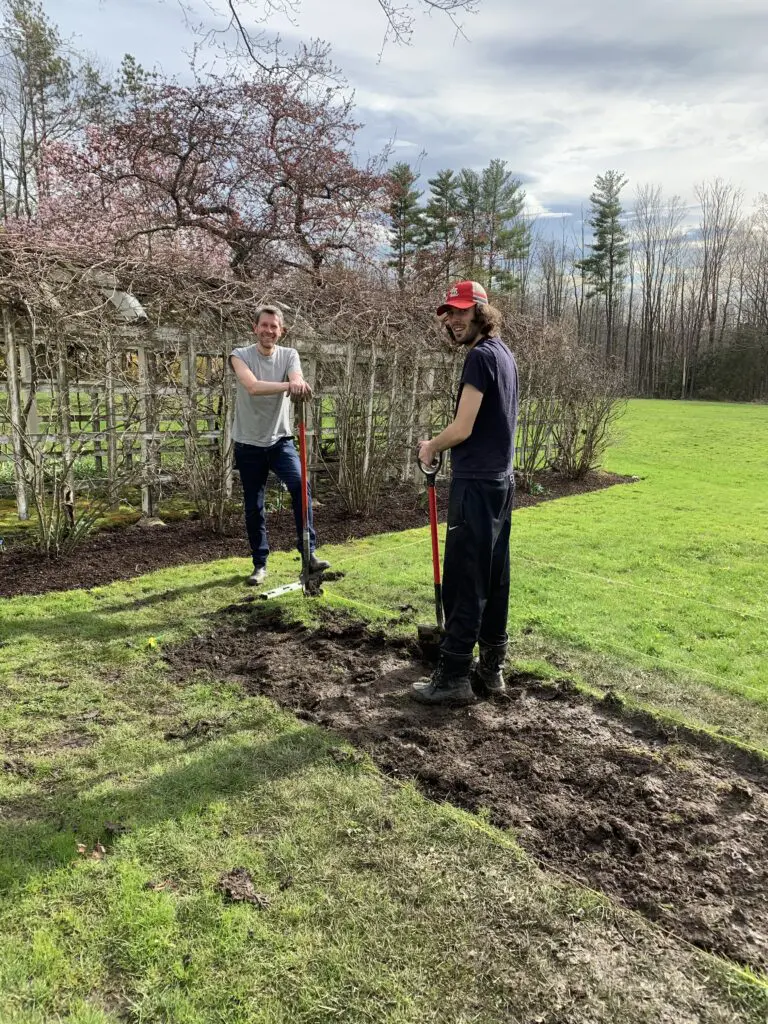
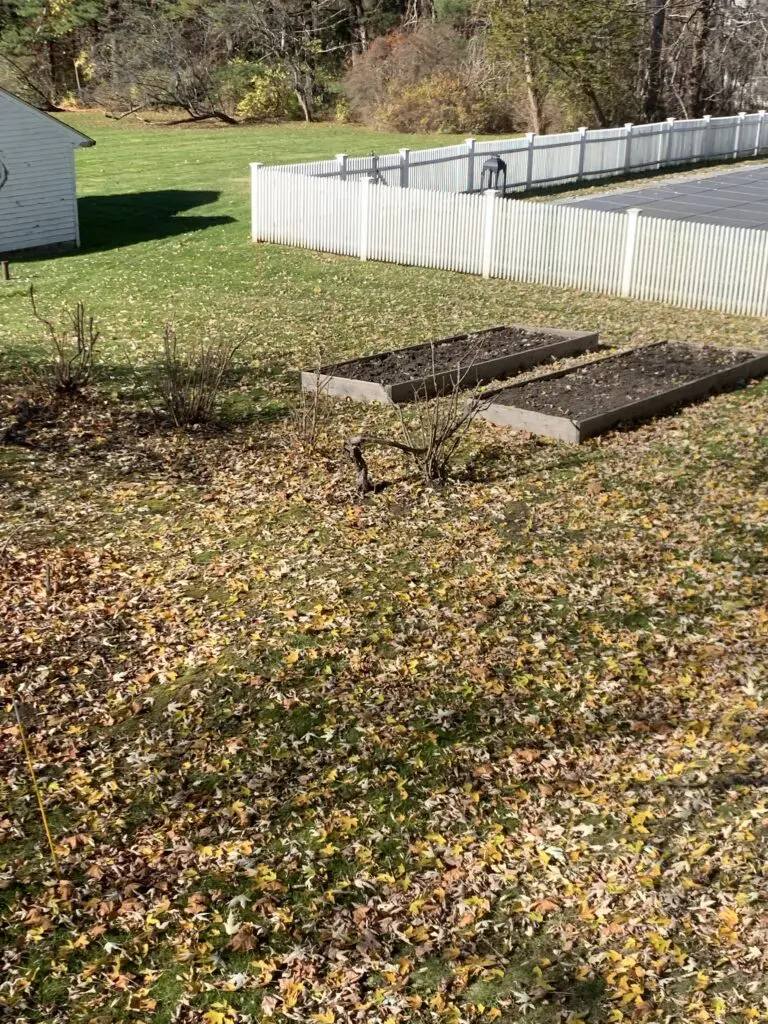
I had experience growing bell peppers and tomatoes from seed, so I naturally began there. However, one evening, I became intrigued to see if I could grow a lemon tree using the seeds from all those lemons I used for my evening gin and tonic to calm the anxiety of living through a pandemic. As they say, when life hands you lemon seeds, grow lemons. Unlike the wealthy Europeans of the 1600s, you don’t need an orangery to grow your citrus.

Before I started, I delved into some basic research and was astounded by the patience required for lemon trees grown from seed to bear fruit. How long does it take? One year, five years, ten years? No, it can take a staggering 15 years to get fruit from a lemon tree. Just imagine the taste of that first gin and tonic with a homegrown lemon slice after 15 years of anticipation. The good news is that you can use seeds from any lemon to grow trees. I used the organic lemons we bought every week from the local supermarket on our mask-wearing sprint around the store.
Mature lemon trees purchased from your local nursery will produce lemons much quicker. I didn’t have that option during lockdown, but I had so much time, that 15 years seemed worth the wait. Learning to garden gave us all a newfound patience.
So, how to start? Based on research, I cut open the unused half of a lemon one evening after dinner and removed the seeds. I rinsed them in tap water to remove the pulp and left them to dry for a day. And then, very simply, I planted the 5 or 6 seeds in fertilizer-free potting soil in individual plastic cups I had at home and placed them on a sunny windowsill in the kitchen. Remember not to leave the seeds too long after cleaning them before planting; they can quickly dry out. Once planted, I watered the seeds thoroughly and keep them in warm conditions to germinate (around 70°f).
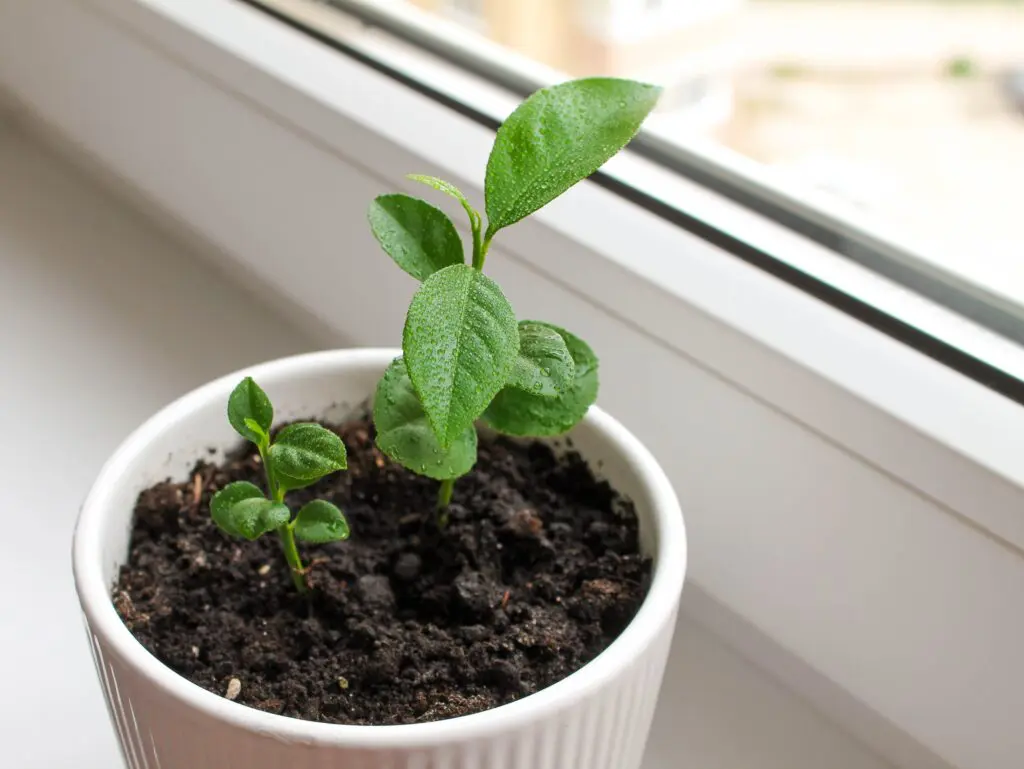
After a few weeks, the roots began to sprout, and my seeds germinated after two or three weeks. I left them in the plastic cups for two months before I thought about moving them, but I moved them outside when the weather got warmer in small ceramic pots. It was spring when I decided they were ready for their longer-term homes, and that’s the best time to repot them, just before the growing season. Young lemon trees grown in containers are repotted about every two years; mature ones are repotted every three to four years.
Initially I chose terracotta pots I found in my potting shed, which work well with lemon trees. They keep them nice and dry in the summer and retain heat. Honestly, mine settled in well to their new homes. Now that they had germinated, I potted them up again using fertilized potting soil, and fed them with an organic seaweed based fertilizer every two to three weeks. If the plants developed branches that looked dry, thin, tired, or lacking vigour, I removed them. I left them outside all summer and early fall; they loved the sunlight and warmth of CT, and I loved watching them thrive. In the fall, as the pandemic continued, I moved them back indoors to a sunny spot for winter, where it was cool and frost-free. Our cottage/pool house worked perfectly, and as my husband was still working in the cottage full-time, they were well taken care of.
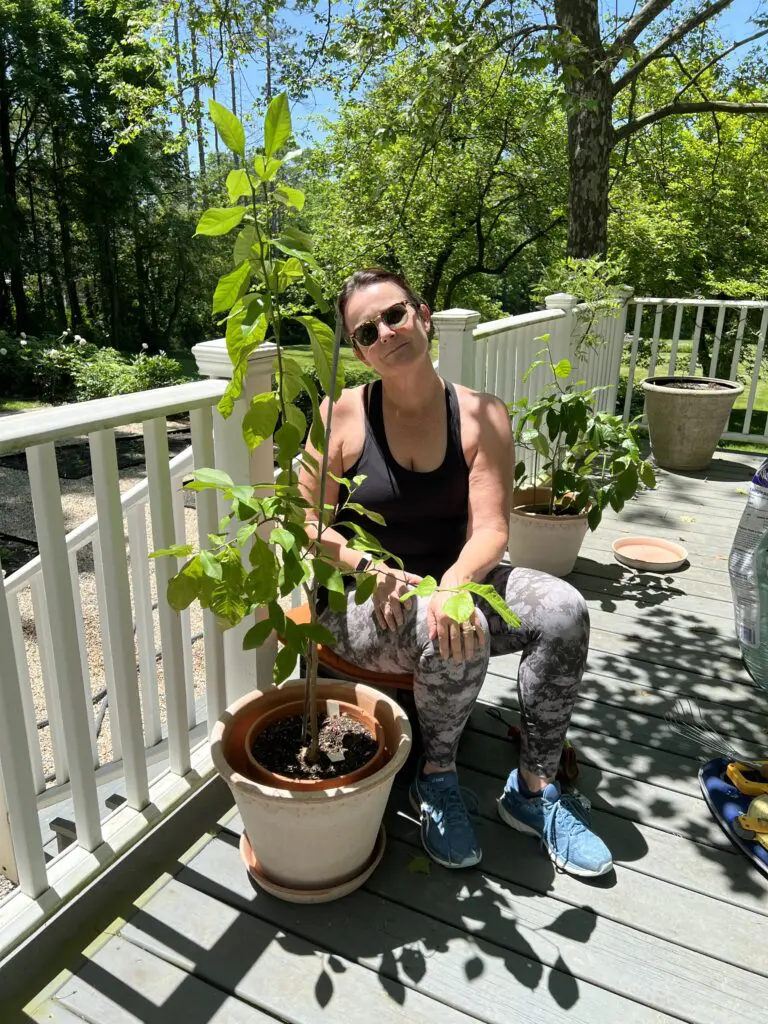
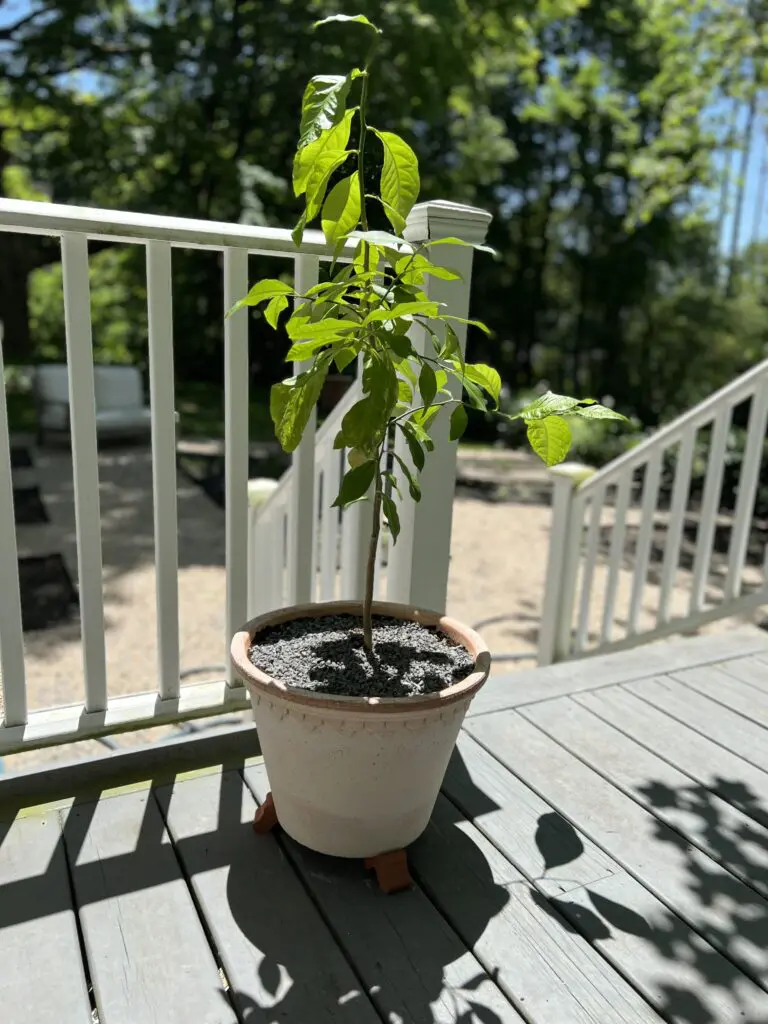
I was careful not to put them anywhere too hot or near a heater. Even a garden or potting shed will work if they are not exposed to frost. Fertilizing them becomes crucial when they bear fruit, but mine have yet to do that nearly five years after planting.
I also learned a few other things along the way. Citrus trees are best planted in a pot so you can easily move them depending on the weather. We get a heavy frost and snow in winter in CT so I couldn’t plant them outdoors permanently. Opt for terracotta pots when growing your tree in the long term; they lose moisture more quickly, so it’s easier to avoid overwatering. Good drainage is essential for citrus trees; they won’t thrive in waterlogged soil. Make sure the pots have good drainage and are placed on pot feet to ensure good circulation.
I planted six seeds and nurtured four lemon trees. I have been fortunate so far, but there are some things to look for as indicators of the health of your lemon trees.
- Leaf drop is a sign of stress caused by excessive heat, cold, improper watering, or a lack of humidity, but it is not a disaster. Reducing watering and increasing humidity might help.
- Sticky leaves could indicate the presence of citrus mealybugs or scale insects. They tend to be an issue in humid conditions and excrete a sticky honeydew substance. Wash the leaves occasionally with a soapy solution, and prune them to improve ventilation.
- Leaf damage is due to the larvae of citrus leaf miners who eat the leaves, so be prepared to prune them to remove the damage and stop the spread.
- Yellow leaves can be the result of multiple things. It could be red spider mites; chlorosis, as citrus doesn’t tolerate lime, droughts, low temperatures, over-or-under watering, and poor feeding.
One of the seeds I planted back in late spring of 2020 has now grown nearly 5 feet high and is proudly planted into a gorgeous Seibert & Rice terracotta pot.
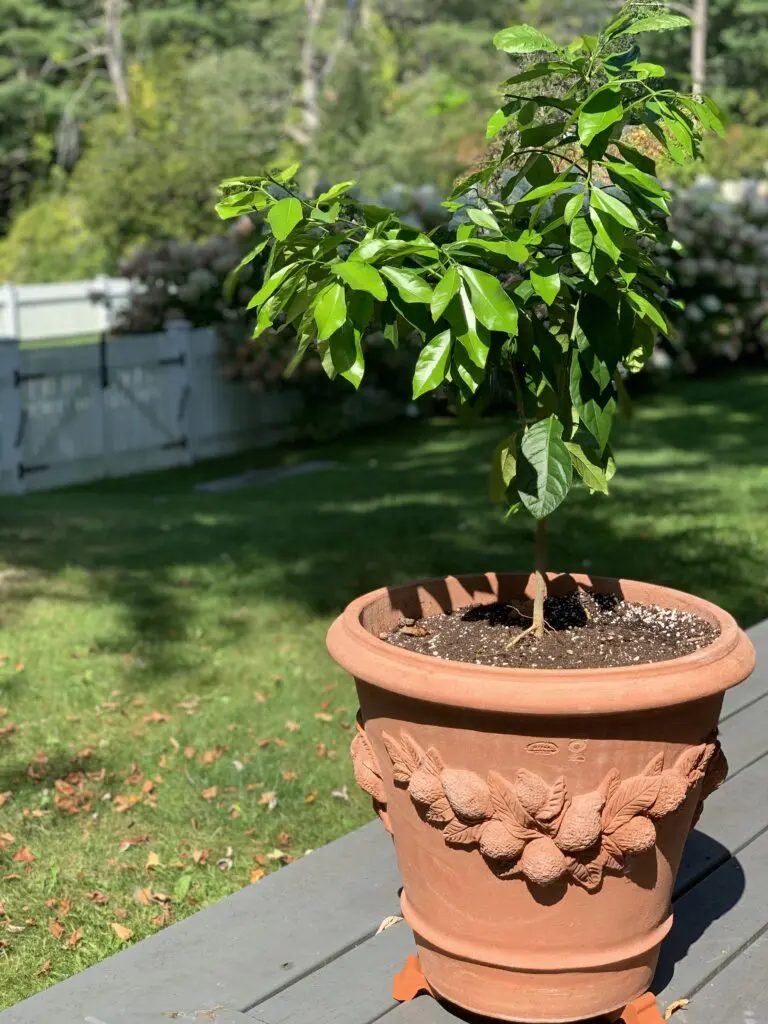
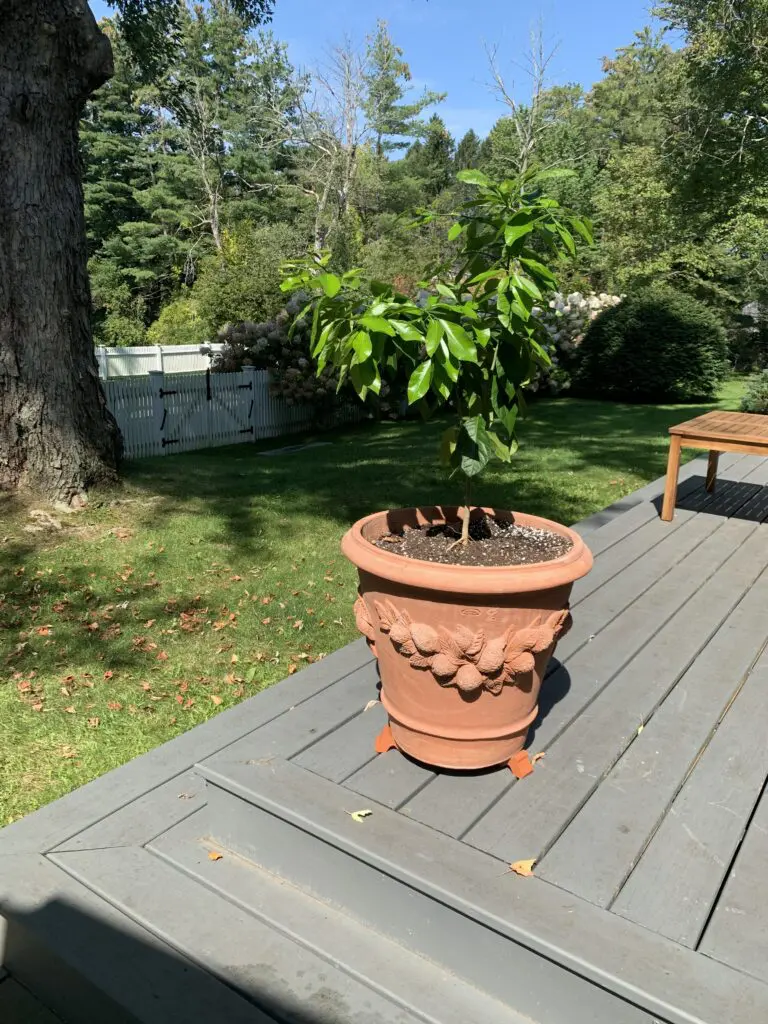
It enjoys the cottage’s set temperature over the winter and thrives during that time of year. It takes pride of place in the cottage during the winter and then is a showstopper on the cottage patio in the summer months. The other three plants are also doing well, but they haven’t grown nearly as big yet. I fear they feel dwarfed by the star of the show.
We are all looking forward to our first crop of lemons, and the trees are a source of family pride and fascination. We dream of lemon drizzle cakes, lemonade and of course, where it all started, that first gin and tonic.

If you have stories about your garden, please send them to [email protected]. We can publish more here later in the year. We would love to hear from you.
Your Garden Story. Here to help us all become gardeners and make the world greener.
